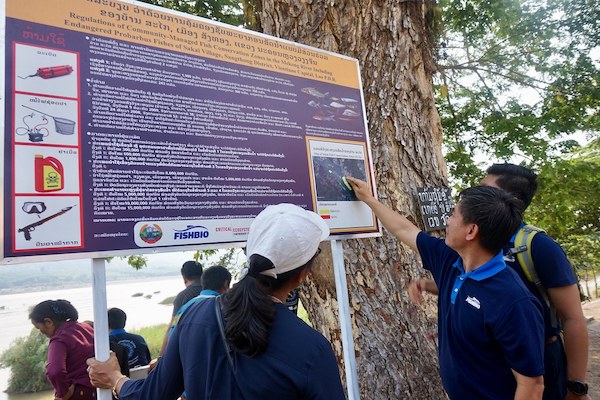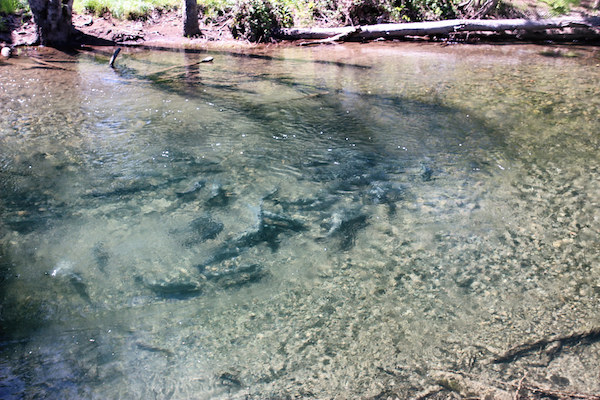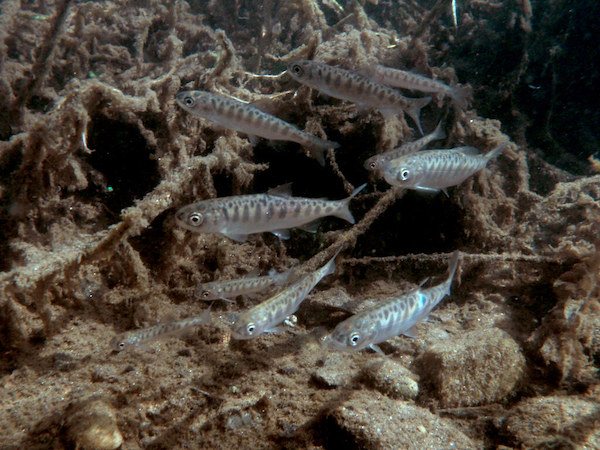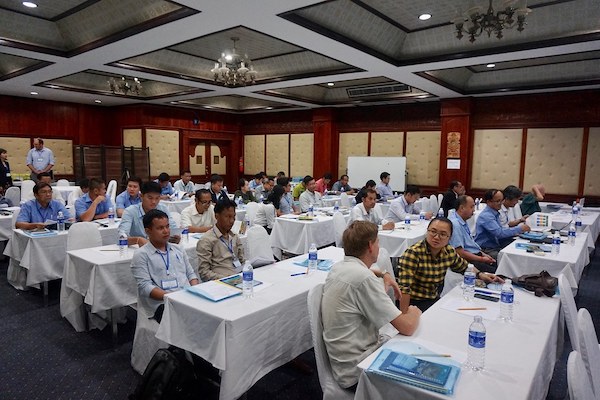Fish Report for 5-28-2019
Filling the Gap: A New Guidebook for Assessing Freshwater Protected Areas

by FISHBIO
5-28-2019
Setting up a protected area is only the beginning of a long-term conservation effort. An ongoing commitment is needed to ensure that the area is truly protected, and to determine whether the conservation effort is working. A wealth of resources has been developed to monitor and assess the effectiveness of terrestrial and marine protected areas, but few options exist for those wishing to measure the success of freshwater protected areas. This is especially true for small-scale, community-based freshwater protected areas like those in the Lao People’s Democratic Republic (Lao PDR), which are known as Fish Conservation Zones (FCZs). In an effort to address this resource gap, FISHBIO has developed a new guidebook on how to assess the effectiveness of FCZs in Lao PDR. We recently released the guidebook at a workshop hosted with the Lao Department of Livestock and Fisheries (DLF) in Vientiane, Lao PDR, on May 9 and 10, 2019. The goal of the workshop was to familiarize participants with the steps of an FCZ assessment, and how to use the guidebook to select relevant indicators of FCZ effectiveness for an assessment.
The workshop represented the culmination of a three-and-a-half year project funded by the Critical Ecosystem Partnership Fund, and brought together more than 50 participants representing a variety of stakeholders, including NGOs, the private sector, and government officials. Although the majority of the participants were from Lao PDR, the workshop also included a few international participants from Cambodia, Thailand, and Myanmar. The workshop introduced participants to the process of conducting FCZ assessments as part of the fisheries management cycle. During the two-day training, participants became familiar with each of the guidebook’s 21 indicators of FCZ governance, socioeconomic, and ecological effectiveness, as well as a smaller companion guide known as a field handbook, which walks through the steps of an FCZ assessment. Participants learned how to select relevant indicators to measure during an FCZ assessment based on the goals and desired benefits of an FCZ. They also received copies of an FCZ status report prepared by FISHBIO, DLF, and the World Wide Fund for Nature, which identifies more than 1,300 Fish Conservation Zones in Lao PDR.
Throughout the workshop, participants shared lessons learned from their experiences of establishing and monitoring FCZs. Several participants noted that they were already planning to begin the process of FCZ assessment and expressed that the guidebook represented at timely and useful resource for this endeavor. The workshop concluded with a half-day field trip to visit the fish feeding station at a Mekong giant catfish FCZ, as well as a visit to the site of newly established FCZs that FISHBIO has been working to support in Sangthong District, Vientiane Capital. Participants met with members of the village committee and enforcement team of Sakai Village to hear about their experiences with FCZ management. To wrap up the project, our team also recently paid a visit to the communities at the three pilot sites where we field-tested the guidebook to present the results and recommendations of the FCZ assessment pilot studies. Our final goal for the project is to distribute the guidebook throughout Lao PDR and other Southeast Asian countries, where we hope it can serve as a resource to improve the management of FCZs and support fish conservation across the region. Please visit the Mekong Fish Network website to download electronic copies of the FCZ assessment guidebook and field handbook.
FISHBIO is a dedicated group of research scientists, engineers, and technicians that specialize in counting, tracking, and analyzing trends in fish and wildlife populations throughout the world. An expert staff, technical capacity, and state-of-the-art equipment make FISHBIO a trailblazer in aquatic research. For more information, please visit FISHBIO.com
Photos
More Reports

5-20-2019
California’s salmon and trout have persisted to survive in spite of significant challenges both past and present, highlighting that they...... Read More

5-13-2019
Although they spend their lives hidden beneath the surface, fish are directly affected by the weather happening outside their aquatic...... Read More

Website Hosting and Design provided by TECK.net

